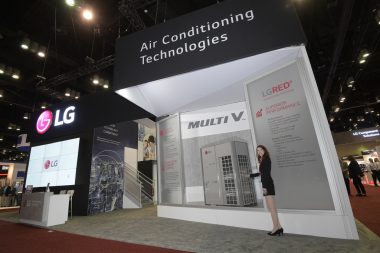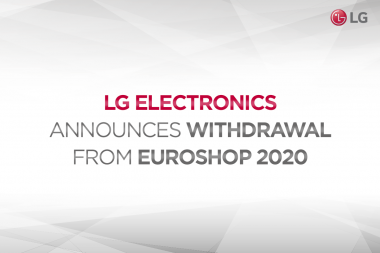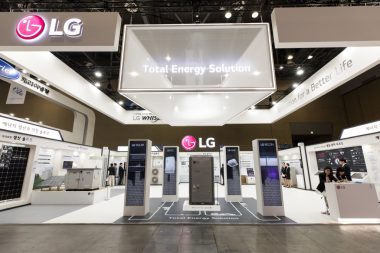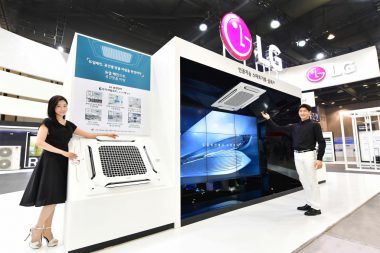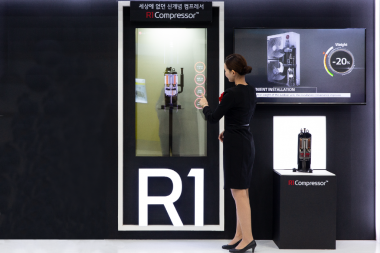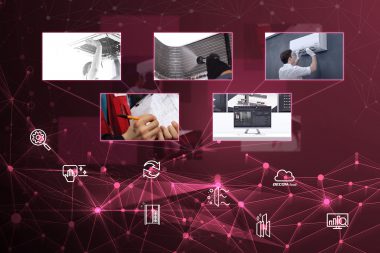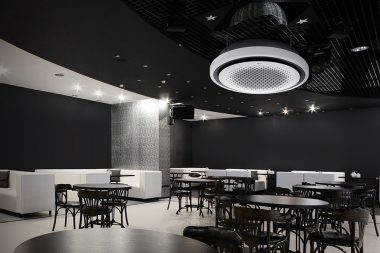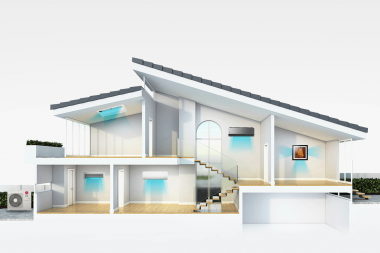With the advent of Industry 4.0 and ICT technology, the rate of technological convergence between industries is accelerating and industries are expanding more rapidly. As a result of this trend, connectivity between products and technologies has become an integral part of the technological ecosystem. According to a report, as many as 75 billion devices will be connected by the year 2025 to provide a wide range of IoT services. The speed with which devices become connected is accelerating and also predicted to accelerate. In this 2 part series, we will discuss what makes a ‘Smart Home’ smart and the advantages of integrating an HVAC system into a Smart Home in part 1, and take a detailed look at Smart Home connectivity technology and trends in part 2.
 Forecast for the number of connected devices by year
Forecast for the number of connected devices by year
The Smart Home
A Smart Home is a house that implements IoT based connectivity to provide various services and transform the living experience. It also enables communication with household appliances, which makes control functions such as gas valve control, HVAC control, and lighting control possible. Therefore, residents of a Smart Home can take advantage of these services automatically, even when they are away from home.
 The Smart Home and SmartThinQ Connectivity
The Smart Home and SmartThinQ Connectivity
The difference between a Smart Home and a Home Network is that the Home Network provides only a limited range of services such as controlling or monitoring the boiler, lights, door locks and CCTV systems. In short, a Home Network’s service range through which users share and use information is limited. However, a Smart Home can utilize IoT and artificial intelligence technology through cloud servers from telecom operators or Smart Home companies using an existing Home Network server. This operability makes it possible to provide an almost unlimited number of services to users. For example, by learning user patterns, a Smart Home can control multiple home appliances without direct commands from the user and reduce the burden of doing chores around the house. In addition, it can even provide remote emergency medical care, make emergency calls, or measure energy consumption. It can also offer economical benefits by controlling energy consumption rather than merely monitoring energy consumption.
However, communication standards for Smart Home devices have not yet been established, so implementation of certain services is still not as seamless as it could be. In particular, the Smart Home standards for system air conditioners, which consume the most energy in houses, have not yet been established and there are still issues that need to be resolved in this field. In part 2 of this article, we will also discuss industry trends relating to standardization for these types of systems.
System Air Conditioners and Smart Home Integration Technology
Many types of system air conditioner solutions are available to suit the unique needs and usage patterns of different buildings. In line with the Smart Home trends today, residential system air conditioners are able to be integrated into Smart Home systems and provide an extensive array of services to residents.
 Integration structure for residential system air conditioners and Smart Homes
Integration structure for residential system air conditioners and Smart Homes
Residential System Air Conditioner Functionality in Smart Homes
1) Easy Access
Using various IT devices from inside and outside the home, users can connect to the Smart Home and use various services such as remote control/monitoring of the air conditioner, monitoring of energy consumption, and checking the maintenance status.
2) Energy Management
The system can monitor the cumulative power consumption and power consumption during certain periods to save energy with optimal air conditioner operation suggestions according to the weather conditions outside.
3) Air Purification
Using various sensors installed within the house, indoor air quality levels can be detected and the air purification components within the air conditioners, the ventilation alarm or the ventilation fan are implemented to maintain clean air indoors.
4) Maintenance (system failure prediction, equipment maintenance)
The system monitors the status of the air conditioner in real time to determine whether the system requires attention or not shares the information with the service center of each manufacturer so that any issues can be quickly resolved. Also, the system provides guides on the filter cleaning cycle and, therefore, makes it possible to operate the air conditioner under more stable conditions.
Now we have covered the basics of what makes a Smart Home and advantages of residential HVAC system connectivity. But there is much more to learn about how system interoperability works and the protocols that make it possible. Be sure to keep an eye out for part 2 of this series for a more comprehensive introduction to the IoT behind Smart Home connectivity.



